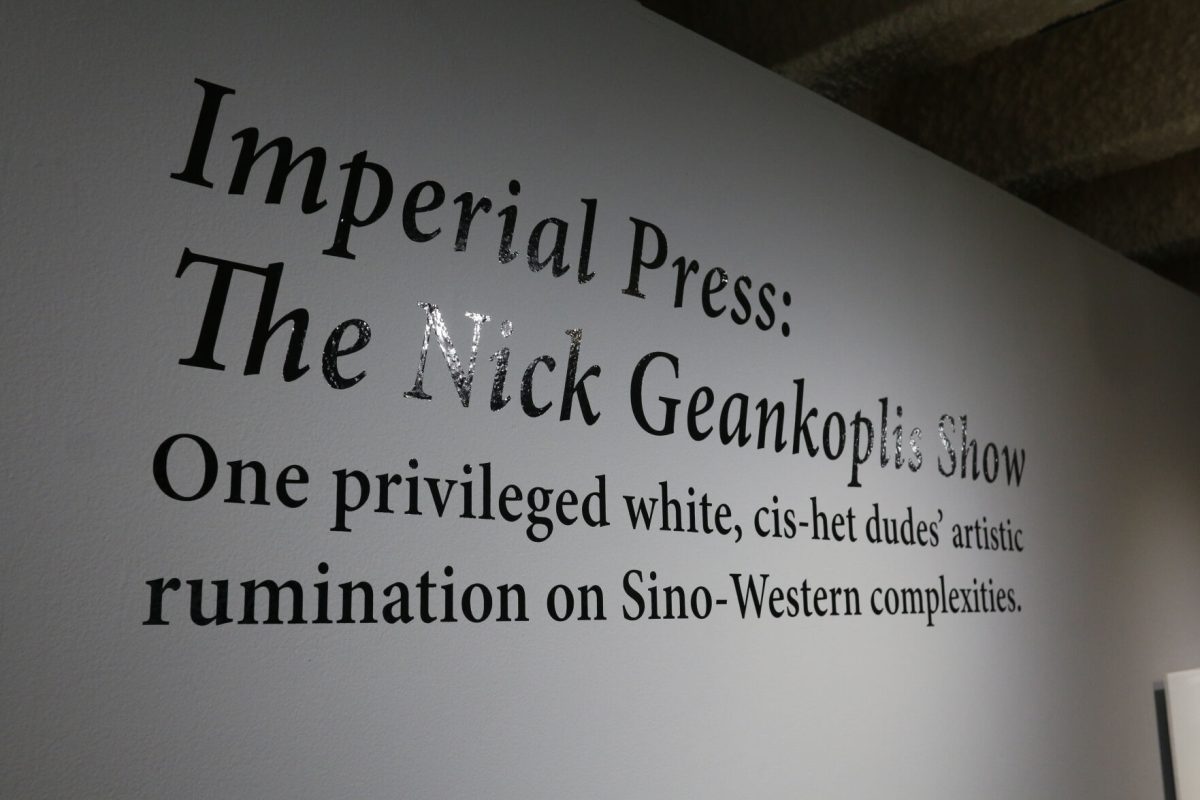
Imperial Press: The Nick Geankoplis Show Gallery is open for viewing 9 a.m. to 3 p.m. weekdays until Oct. 14, located inside Norman R. Eppink Gallery, King Hall.
Imperial Press: The Nick Geankoplis Show, is currently on exhibit in Emporia State’s Norman R. Eppink Gallery. In this exhibit Nick Geankoplis, assistant professor of art at Kansas State University, attempts to challenge the traditional and utilitarian perceptions of ceramics.
The exhibit consists of wall-mounted ceramic tiles that are decorated with glaze and decals. The tiles have no utilitarian function or purpose, they are simply pieces of art that are meant to be looked at.
“Those are non-functional ceramic pieces,” said Roberta Eichenberg, professor of art and gallery director at ESU. “It’s a departure from most ideas about ceramics. It’s trying to elevate the common material to a fine art, a pinnacle. It’s kind of a strange thing to frame-up a ceramic tile.”
Another aspect of the tiles that is important to note is that some of the tiles are in frames. Framing ceramic tiles is not a common practice in the US but it is common within Asian cultures.
“It’s really common in China, all the tiles are presented in frames,” said Geankoplis. “It’s been discussed in my work as sort of audacious to frame ceramics like we would paintings. ‘How do we elevate this domestic, dirty material any further?’ We make it like a painting by putting a frame around it.”
Many aspects of the exhibit are inspired by Chinese ceramic techniques. Before teaching at KSU, Geankoplis had spent several years living, learning and teaching in Jingdezhen, China, which is considered the ‘Porcelain Capital’ by The United Nations Educational, Scientific and Cultural Organization (UNESCO) due to the city’s over 1,700 year history in ceramic arts.
“I describe it (going to China) as dismantling my idea of what ceramics is and what it can do. What I witnessed was people working on a scale and a technical ability and craft skill that is unimaginable here in a sort of American context because the material is so embedded culturally. It has such an exceptionally long history that was supported by the different dynasties.”
All of the tiles Geankoplis uses are imported from Jingdezhen and the decals that he uses are sourced from all around the world. When designing the decals of the tile, Geankoplis doesn’t attempt to narrate a story, rather he forms a “Mad Lib” so that the observer can form their own narrative.
“I have no narrative story for the pieces themselves, but as you look at them, it’s impossible not to get these sort of little vignettes, little moments of ‘is that an idea or is that telling a story’, it sort of pokes and prods you.”
Some of the decals are repurposed on different tiles. Geankoplis says this is a product of the ceramic process. He relates the repurposed motifs to the materialistic culture of ceramics, “well how many cups have you bought at Target are the same in somebody else’s house?”, said Geankoplis.
Since this exhibit is different from others that have visited ESU, you have to approach it with an open mind, according to Eichenberg.
“I think you approach it with an open mind,” said Eichenberg. “Think to yourself, ‘what am I looking at? What is this? What is the material?’ Don’t come in with preconceived ideas of what you think art is, that gets in the way sometimes.”